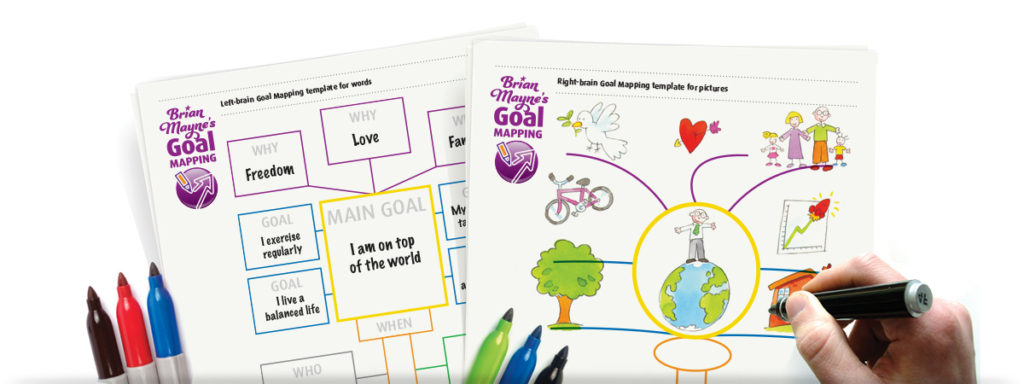
Yesterday, I got the amazing opportunity to participate in a goal mapping workshop. I jumped at the chance to go. New year, new plans, fresh start!
Not Another Boring Workshop
I’d never heard of Brian Mayne. I had googled him before going and was intrigued with his work. He spent the first part of the workshop explaining why most personal development books, tips and advice don’t work. He explained how seeing it done or demonstrated before us makes us more likely to try it ourselves (hence our love for short videos on youtube/facebook/Instagram).
He then gave us a brief overview of the neuroscience behind positive thinking and stress. He explained how creativity can only come when we are in a positive state of mind, thinking helpful or pleasant thoughts that connect neurons with each other and expand our thinking rather than doubtful, negative, or limiting thoughts that disconnect our neurons and send cortisol (the stress hormone) through our system which will limit our thinking.
Dreamboards Are Only Half the Picture
He shared why we need both words and pictures to truly make something happen. Writing our goals down, using words, is not enough. It only connects with one part of our brain. Drawing or finding pictures is not enough (think dreamboards) because it only connects with one part of our brain. But combining the two, using words and pictures to represent our goals, is more likely to work as one part of our brain processes the words simultaneously to another part of our brain processing the pictures. With both parts working together, we’re more likely to see results.
Creating Goal Maps

With this new understanding, we dived into developing our whole brain goal maps. Words on the left, pictures on the right. Now I am far more comfortable with words than drawing pictures, so I was relieved to hear that he has a free online tool that allows you to select pictures rather than draw them yourself! Alternatively, you can do a dreamboard-like version and find pictures yourself online or in magazines etc to stick on your map which are just as good as hand-drawing your own versions into his template.
So after 3 hours, I had a pretty decent attempt at my first goal map. I chose to focus it on my life. My main goal is that I am nourished both emotionally and physically. My other goals are:
- I am actively supporting others
- I am self-employed
- I am in a house with big windows overlooking a stunning view
- I am happily married
We then worked on determining our emotional drivers – to give us motivation to achieve these goals. Then it was about a timeline and what actions needed to be taken along that timeline for these dreams, these goals, to come true. Finally we had to consider who we would need to support us on our journeys.
Using Your Whole Brain to Build Your Future Goals
What intrigued me most was the link he was able to make between the words and pictures for achieving your goals. I was aware of how important it was to engage the whole brain through the work I do as an Emergenetics associate. Your Emergenetics profile helps you understand how you more naturally think. So it was fascinating to me to find another tool that supports this theory.
So what is your big dream?
What do you want to achieve in your life? What goals come out of that? What pictures represent those goals for you? What emotional reasons make these goals important to you? What timeline are you looking at to achieve them? What actions will you have to take? Who will you need support from?

Dare to dream. Dare to build a life you want. If you can dream it, you can achieve it – you just need to take consistent action towards making it a reality.
If you are curious to find out more about Goal Mapping, please find the link to Brian’s website and tools here.
Dream big!
Found this Useful?
Sign up here to have future articles sent directly to your inbox:
